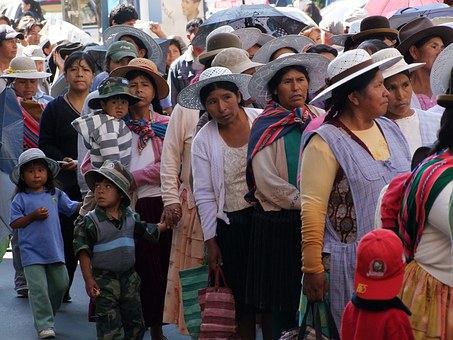The Social Community Productive Economic Model, the government’s strategies aimed at a sovereign management of the economy that is appropriate to the Bolivian context, characteristics and idiosyncrasies, are the explanation for its success.

Jorge Petinaud Martínez
“This year we consolidated the economic reactivation, despite attempts at internal destabilisation and the unprecedented international crisis.
As of October 2022, exports of soybeans and derivatives grew 74.2 per cent, reaching US$2.017 billion, the highest level in 10 years,” Bolivian president Luis Arce wrote on his Twitter account.
According to Gary Rodríguez, general manager of the Bolivian Institute of Foreign Trade (IBCE), in October the country’s exports grew by 34 per cent in value and four per cent in volume, bringing them to more than $9.5 billion. Imports amounted to USD 8,354 million. Non-traditional exports are in the order of 2.851 billion dollars, representing a 58 per cent growth in value and 47 percentage points in volume.
According to the IBCE, minerals achieved a 23 per cent expansion, both in value and volume, and reached 4.483 billion dollars.
The manager added that the hydrocarbon sector in this direction amounted to two billion 121 million dollars, with a growth of 37% in terms of value.
For his part, analyst Martín Moreira stressed that the “appropriate” measures of Bolivia’s Social Community Productive Economic Model allowed the country to achieve the lowest inflation in the world.
 For Moreira, this is “good news” for Bolivia in the midst of the current international situation marked by the Covid-19 pandemic, armed conflicts, the volatility of commodity prices, climatic adversities and the breakdown of the supply chain, among other issues.
For Moreira, this is “good news” for Bolivia in the midst of the current international situation marked by the Covid-19 pandemic, armed conflicts, the volatility of commodity prices, climatic adversities and the breakdown of the supply chain, among other issues.
He commented that the government of President Luis Arce guarantees food supply in the domestic market with different measures, including the export certificate, subsidies for fuel and some foodstuffs, as well as the measure of zero tariffs on the import of fertilisers.
He stressed that there are also trusts for productive credits, such as the so-called SiBolivia with a fixed annual interest rate of 0.5%, which he mentioned as “the lowest” in the country’s history for the strengthening of the productive sector, among other measures.
On the other hand, according to the newspaper ‘Ahora el pueblo’, the World Bank (WB) improved the projection of Gross Domestic Product (GDP) growth in Bolivia to 4.1% for 2022.
However, the national government maintains the projection that Bolivia will grow by 5.1 percentage points thanks to the reinstatement of the Social Community Productive Economic Model.
The Financial Fiscal Programme (FFP) forecasts growth of around 5.1 out of 100 and final inflation of 3.3 per cent in the current year.
 The World Bank published its report New Approaches to Closing the Fiscal Gap, in which it makes growth projections for other countries. According to the report, the situation for some nations will be as follows: Brazil from 1.5 to 2.5 per cent; Chile from 1.7 to 1.8 percentage points; Colombia from 5.4 to 7.1 out of 100; and Uruguay from 3.3 to 4.8 per cent. The WB also lowered projections for other Latin American countries such as Argentina, from 4.5% to 4.2; Ecuador, from 3.7 units out of 100 to 2.8; Paraguay, from 0.7% to -0.3; and Peru from 3.1 to 2.7 percentage points.
The World Bank published its report New Approaches to Closing the Fiscal Gap, in which it makes growth projections for other countries. According to the report, the situation for some nations will be as follows: Brazil from 1.5 to 2.5 per cent; Chile from 1.7 to 1.8 percentage points; Colombia from 5.4 to 7.1 out of 100; and Uruguay from 3.3 to 4.8 per cent. The WB also lowered projections for other Latin American countries such as Argentina, from 4.5% to 4.2; Ecuador, from 3.7 units out of 100 to 2.8; Paraguay, from 0.7% to -0.3; and Peru from 3.1 to 2.7 percentage points.
(Translated by Cristina Popa – Email: gcpopa83@gmail.com) – Photos:Pixabay












.jpg)












